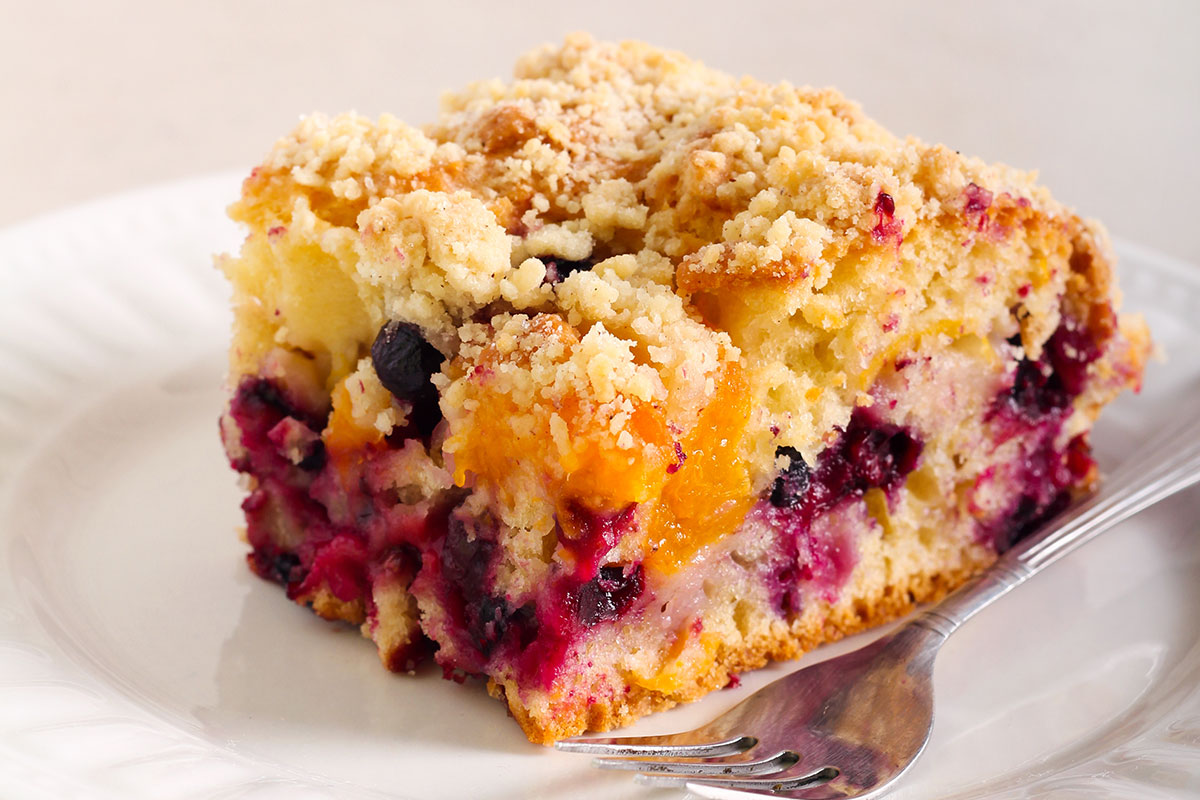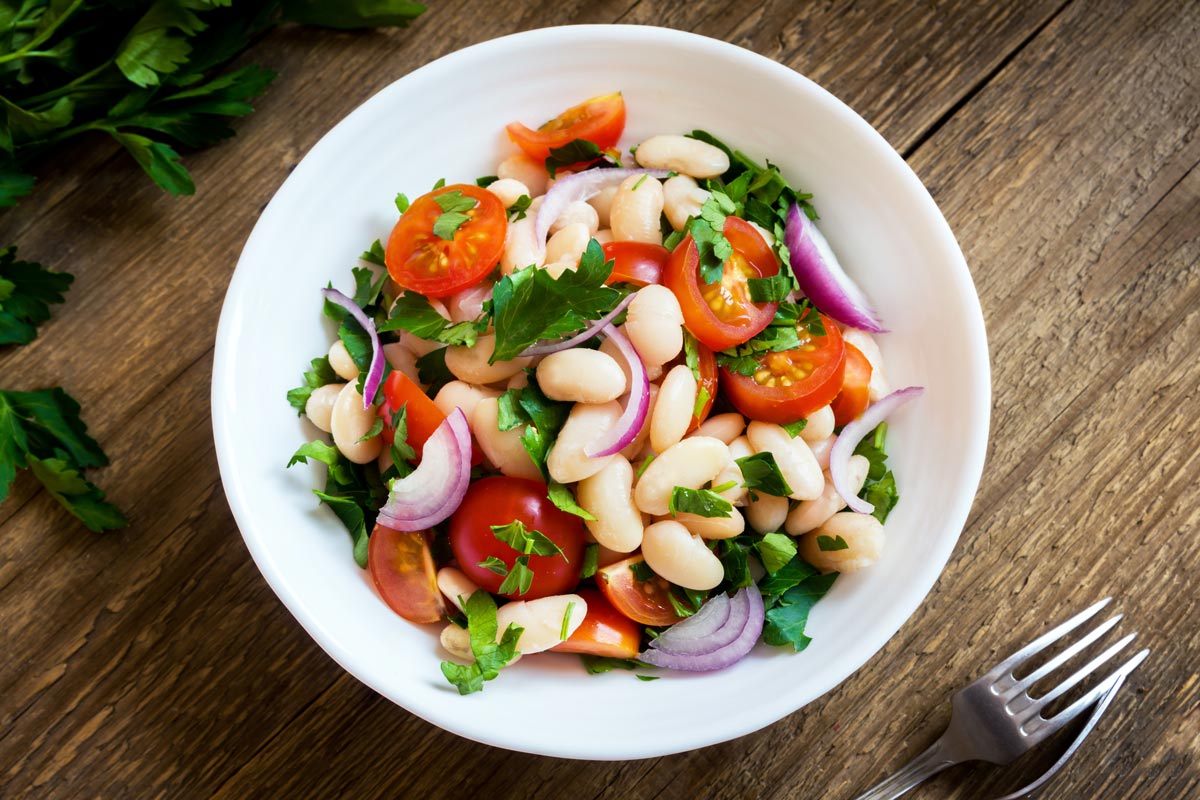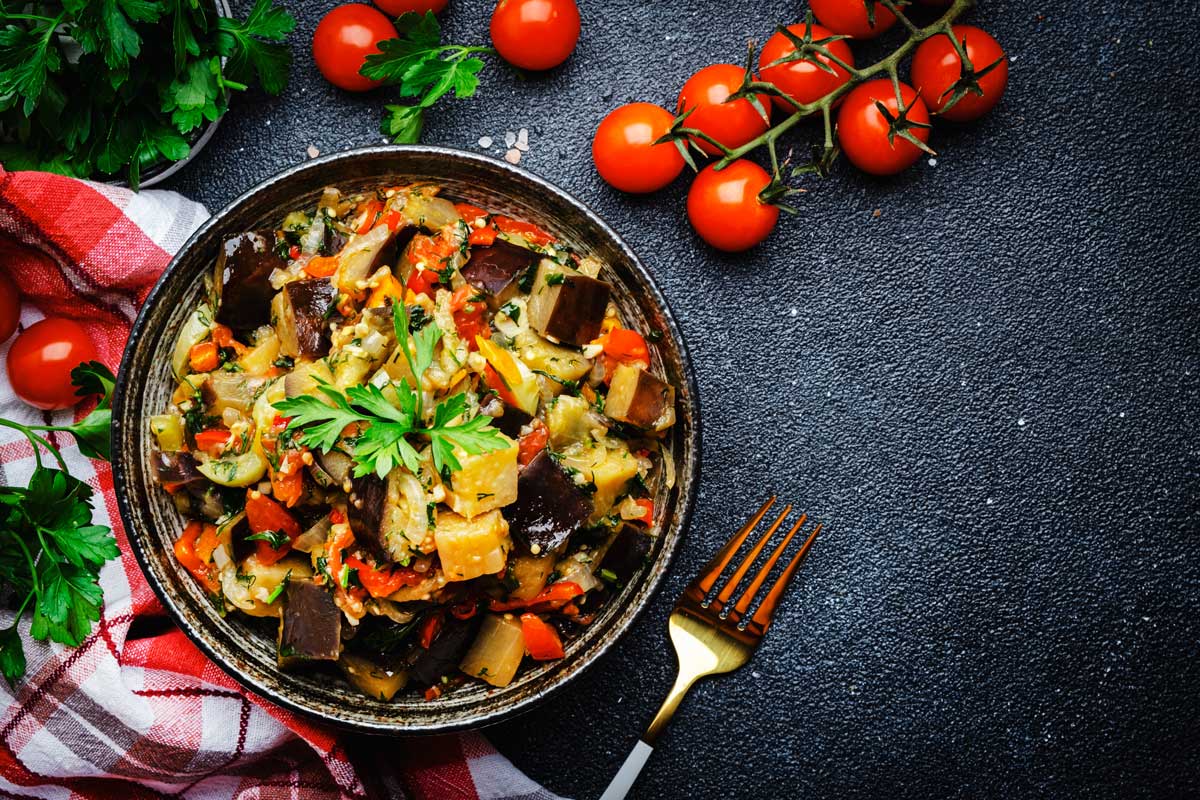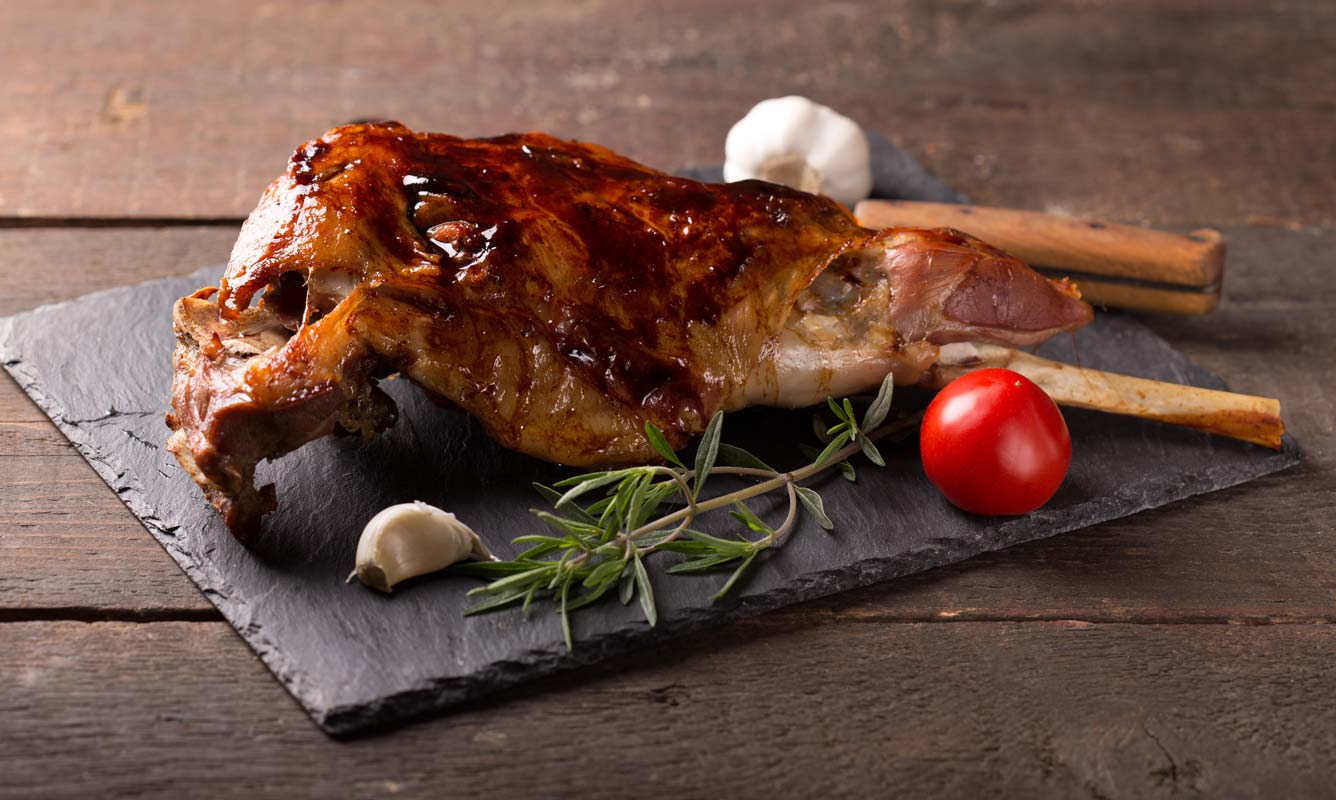This recipe is sized to feed a crowd—any leftovers make a terrific breakfast the next day. Choose fruit based on availability—it’s as delicious with just one variety as it is with four or more! Right out of the oven, the buckle is exceptional when topped with olive oil ice cream, a simple frozen treat you can make at home.
Ingredients
For the crumble topping:
- 4 ounces unsalted butter, cubed and chilled
- 1 cup sugar
- 2/3 cup all-purpose flour
- 1/2 teaspoon ground cinnamon
For the cake:
- 1/2 cup extra virgin olive oil, plus more for the baking dish
- 8 ounces unsalted butter at room temperature
- 2 cups sugar
- 8 large eggs
- 3 cups all-purpose flour
- 1 teaspoon fine salt
- 1-1/2 teaspoons baking powder
- 6 cups assorted berries and stone fruit chunks (skin on)
- Optional toppings: fresh blueberries, confectioners’ sugar for dusting, lightly whipped cream, or ice cream
Directions
Step 1
Preheat your oven to 350°F. Lightly coat a 13-inch by 9-inch baking dish with olive oil; set aside.
Step 2
Make the topping: Use your hands or a pastry blender to turn the butter, sugar, flour, and cinnamon into small bits, ranging from the size of peas to the size of beans. Set aside.
Step 3
Make the batter: In a large bowl, cream butter and sugar with an electric mixer until fluffy. With the machine running on low, slowly pour in the olive oil and then add the eggs, one at a time, beating after each addition until combined. In a separate bowl, whisk together flour, salt, and baking powder. With your mixer on a low speed, gradually add flour mixture to the wet batter until incorporated.
Step 4
Transfer the batter to the baking dish and use a large offset spatula to smooth the surface. Arrange the fruit in a fun pattern over the top and then sprinkle on the crumble, being careful to get it into the corners of the dish so that every bite includes it.
Step 5
Bake until the top of the cake is browns lightly and the tip of a sharp knife inserted in the center comes out clean, about an hour. Serve while still warm.
Yields 12 servings




